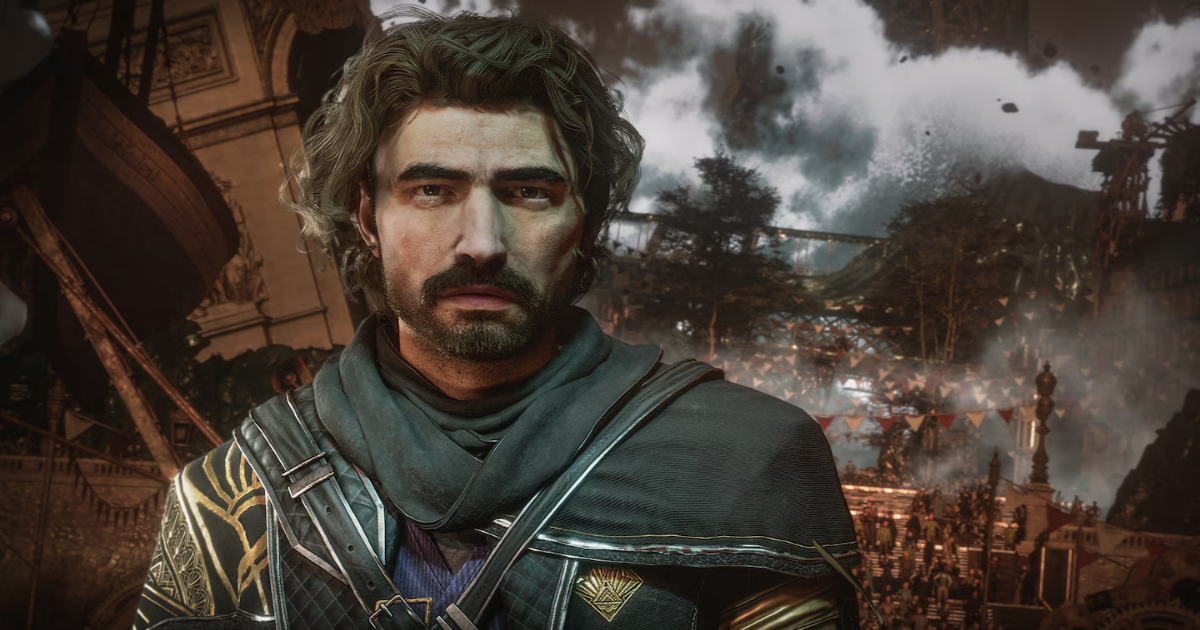It’s not always necessary, but knowing about the artist can deepen appreciation for the art. Case in point: It’s important to remember that such a well-designed, complete project like “Clair Obscur: Expedition 33” is made by a small team of about 30.
As such, “Expedition 33” is an excellent debut game by Sandfall Interactive in France, inspired by belle époque art and Japanese role-playing games such as “Dragon Quest” and “Persona.” This achievement is made even more impressive when the turn-based combat system here exceeds that of those legacy series. Luxurious animations and special effects give every battle a feeling of real impact that is often missing in the genre.
Beyond that, it has a great narrative hook. A titan-size weeping woman paints a number on a giant monolith, and everyone in the world that age vanishes into dust. For 66 years, expeditions have been sent to a fractured, dangerous continent to kill this Paintress and end the cycle of death. You join Gustave (Charlie Cox) and his adopted sister, Maelle (Jennifer English), on Expedition 33 now that the world is left with no one but 30-somethings and under. This story takes a few hours to introduce this dreary premise and the main cast, including the mysterious and deadly Renoir (Andy Serkis).
This game features a world map, a scale-model explorable world that was a feature in many RPGs of the 1990s and early 2000s, dropped when the high-definition era shifted to tight focus on detail and immersion. “Expedition 33” demonstrates why this cozy method of exploration is sorely missed — though the music accompanying it sounds more fit for a funeral march than a grand adventure.
The score, by Lorien Testard, is otherwise excellent, with a surprising diversity and breadth of music, including character leitmotifs and unique songs for certain monsters or battles. Of course, the first time you hear an accordion fire up, it’s against a monstrous mime. That’s a small flash of whimsy in a game whose otherwise drab and dark tone can be a turnoff. Halfway through the adventure, Maelle laments: “Everywhere we go is death, death and more death. I just don’t want to see that anymore.” Same.
The brown-and-gray color palette recalls the dull filters of Xbox 360 and PlayStation 3 games, which may be a nostalgic draw for some. Those old games, as well as “Expedition 33,” are powered by Unreal Engine, but, sadly, the team’s limits are felt here, with technical drawbacks such as clipping and pop-in assets, along with wrinkly textures that try too hard to look big-budget.
This desperation to impress an audience that prefers high-budget presentation is the game’s biggest misstep. Sandfall is teaching a valiant lesson here in focusing a small team on an otherwise brilliant game, but maybe a simpler art style would have further distinguished this game from the pack. It doesn’t need to look expensive; it just needs to look good, which this game does only sometimes. Thankfully, the actual character and monster designs are fascinating and attractive.
The gameplay design further betrays this desperation. Too often, the game mimics platforming elements — asking players to jump and shinny across ledges — and the find-three-buttons design of more expensive games that perform better. Sandfall’s passions are clearly for Japanese turn-based role-playing systems, and it’s a shame this project was distracted by elements it’s not equipped to build yet.
The narrative is about the relationship between art, artist and audience. “You’ll never be a true artist if there’s always a mask between you and the viewer, especially when the viewer is you,” a sage journal reads late in the game, summing up the game’s narrative themes nicely. It’s also advice this team could have followed. The look of a AAA game is merely a mask. This game’s true heart is in its RPG systems.
And that’s where I fell in love. The game introduces exciting new ideas to turn-based combat, injecting real physicality by allowing players to free-aim with guns against weak points, engagement that would be welcome in the Persona series that inspired this game. Firing guns uses up precious ability points for spells and stronger attacks, so there’s a fine balance here. Parry, dodge and jump mechanics from Nintendo’s Paper Mario series are re-created here in visceral form. When an enemy attacks the entire team, it’s a thrill to hit the shoulder button for a parry and see the entire party leap into action for a booming counterattack.
A loose and unrestricted build system enriches this game. Accessories called Pictos have certain abilities that can be permanently unlocked and equipped for the entire party after only a few rounds of use. Mixing and matching for character building gives depth that feels empowering and addictive.
And although the story and presentation stay dreary, the game’s strong themes and charming characters, carried by Testard’s sweeping, mournful tracks, won me over. Its world is deceptively large, too, with dozens of side adventures and locations to explore. “Clair Obscur: Expedition 33” is a must-play for anyone who appreciates turn-based RPGs, and it’s an immediate entry to the upper echelons of the genre.
